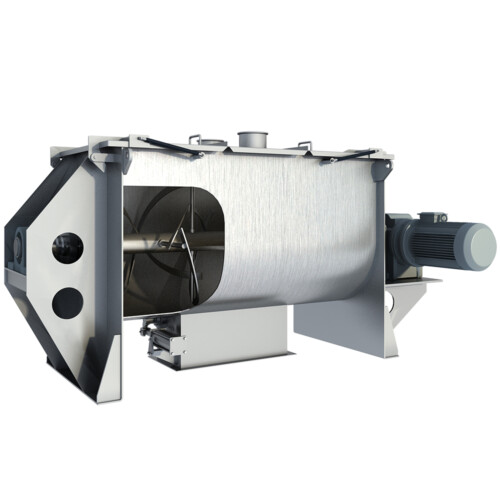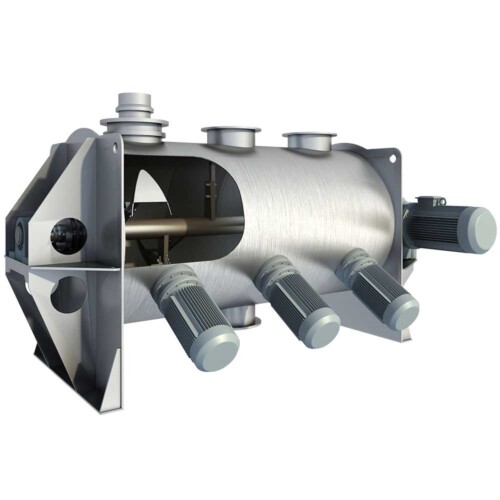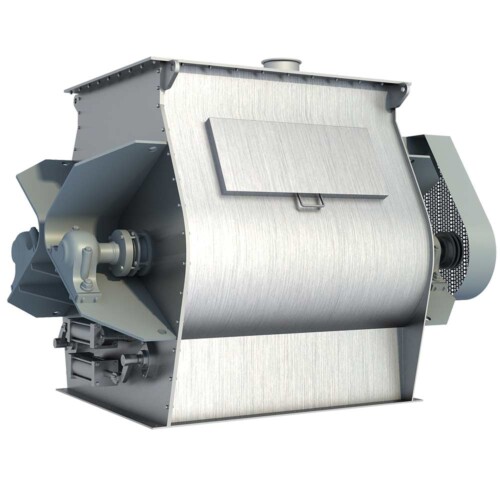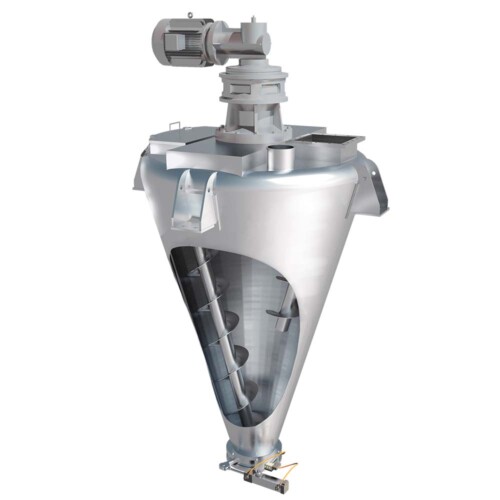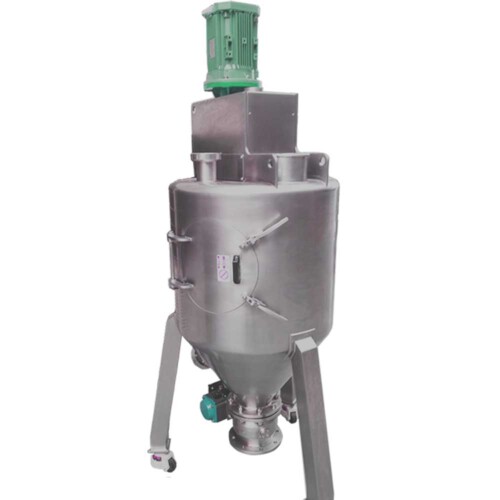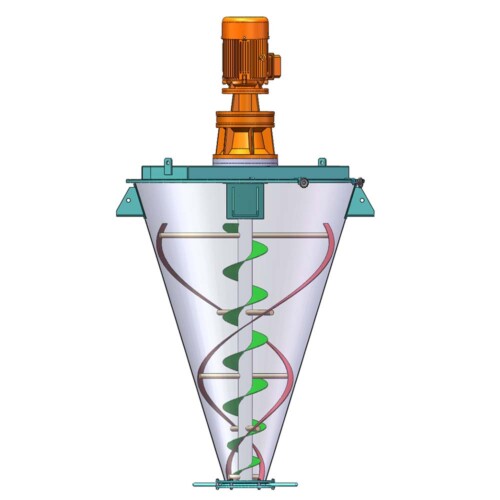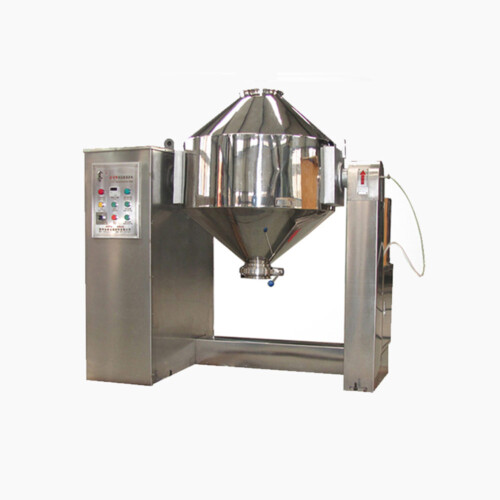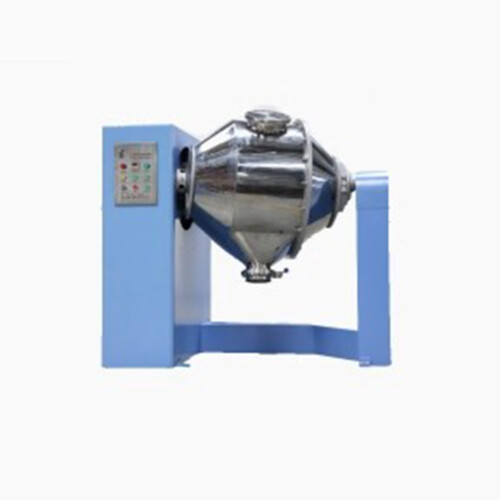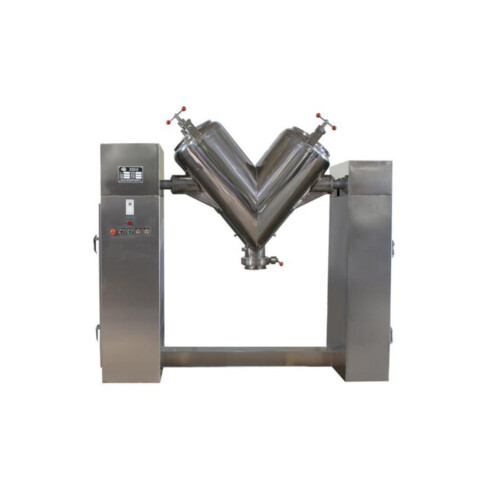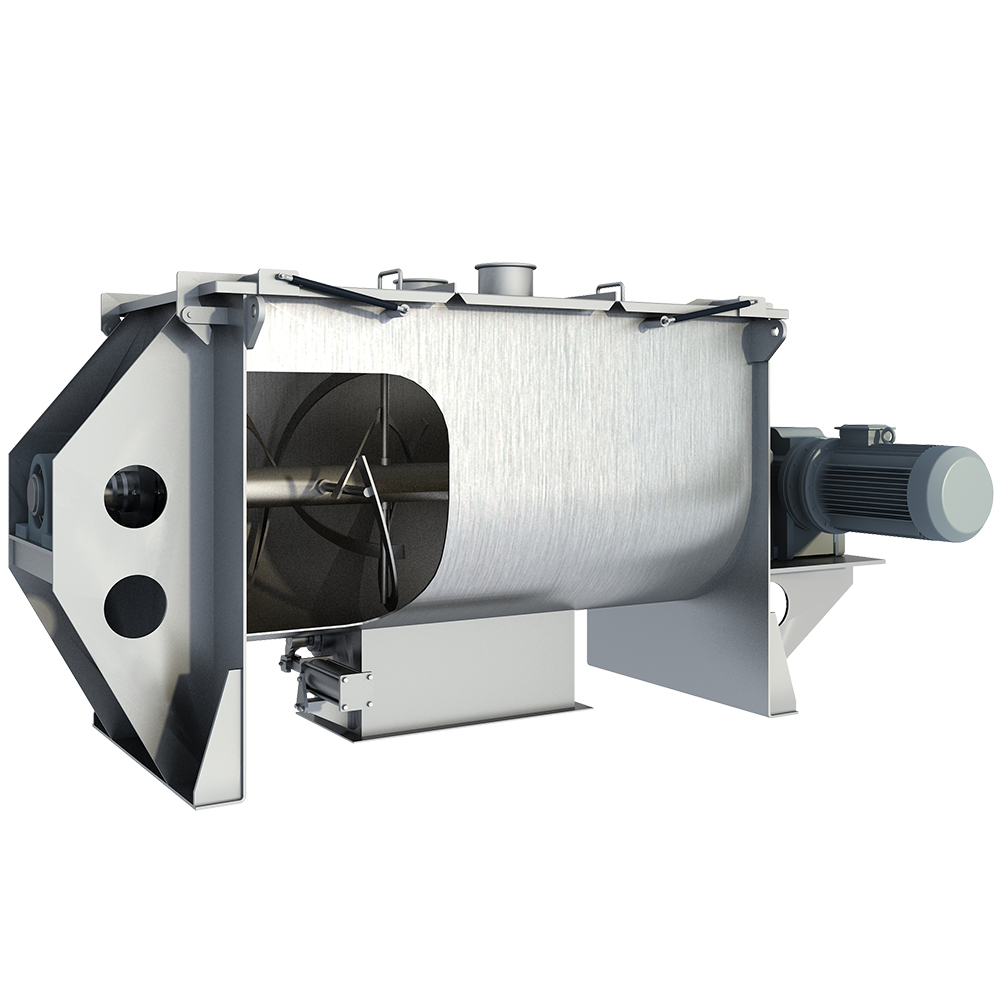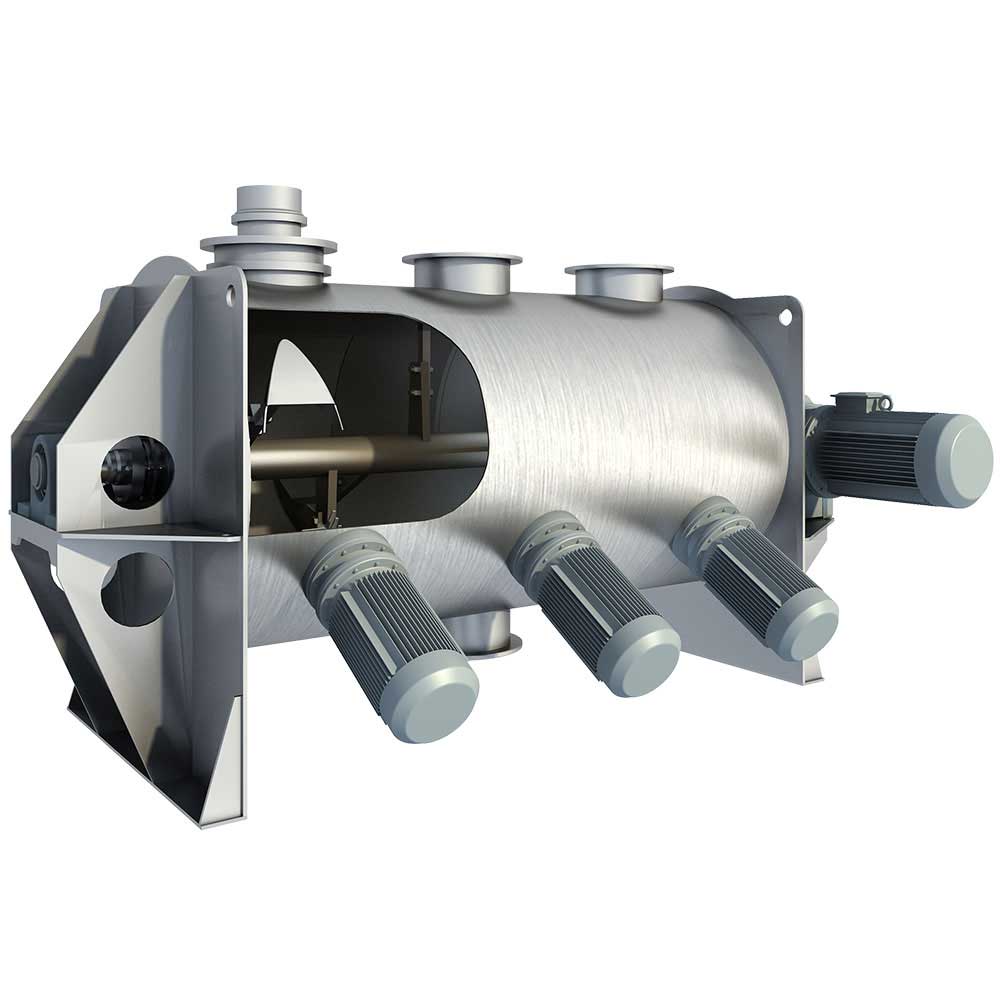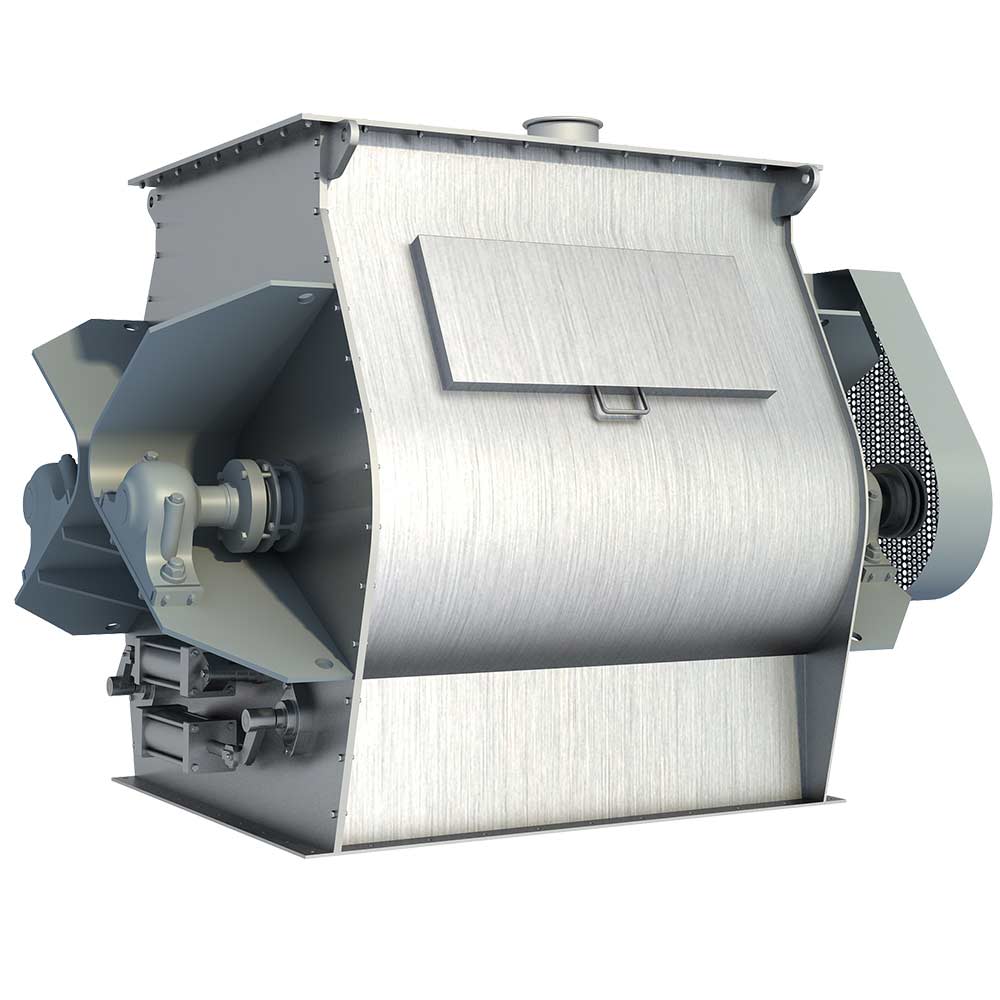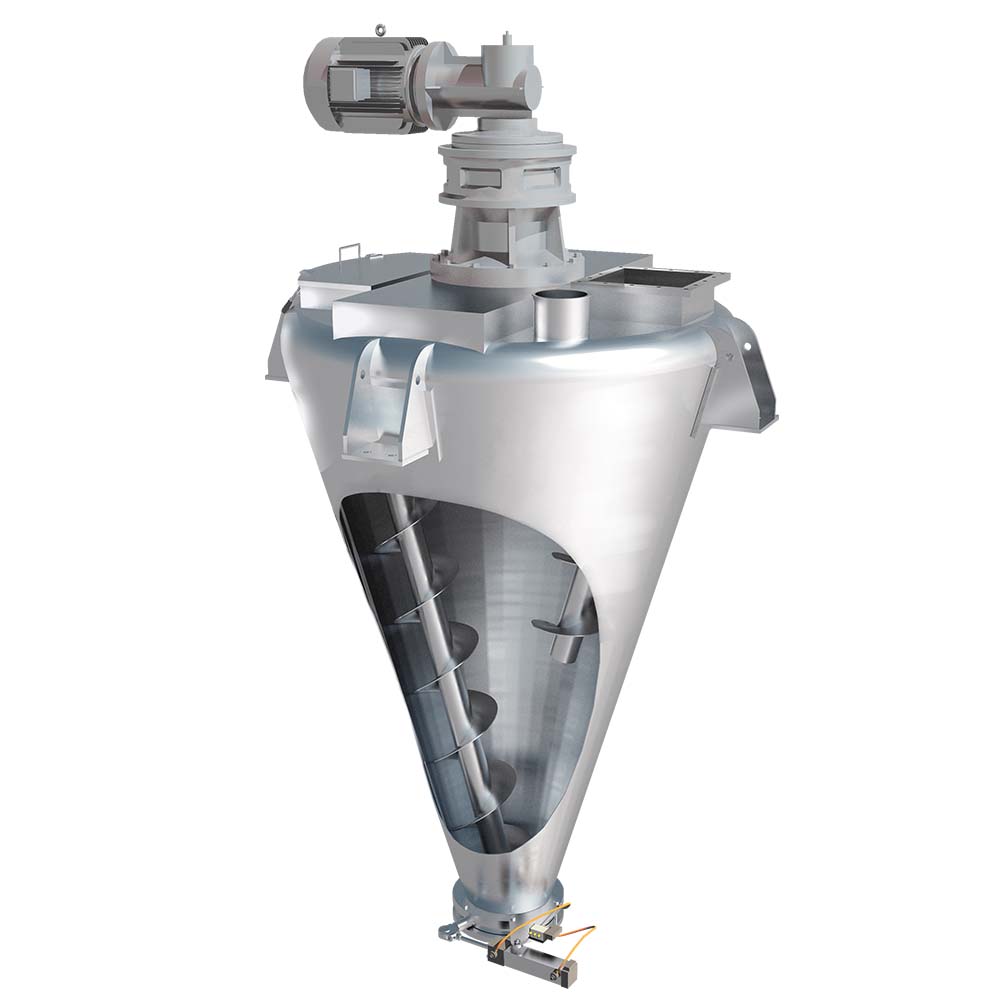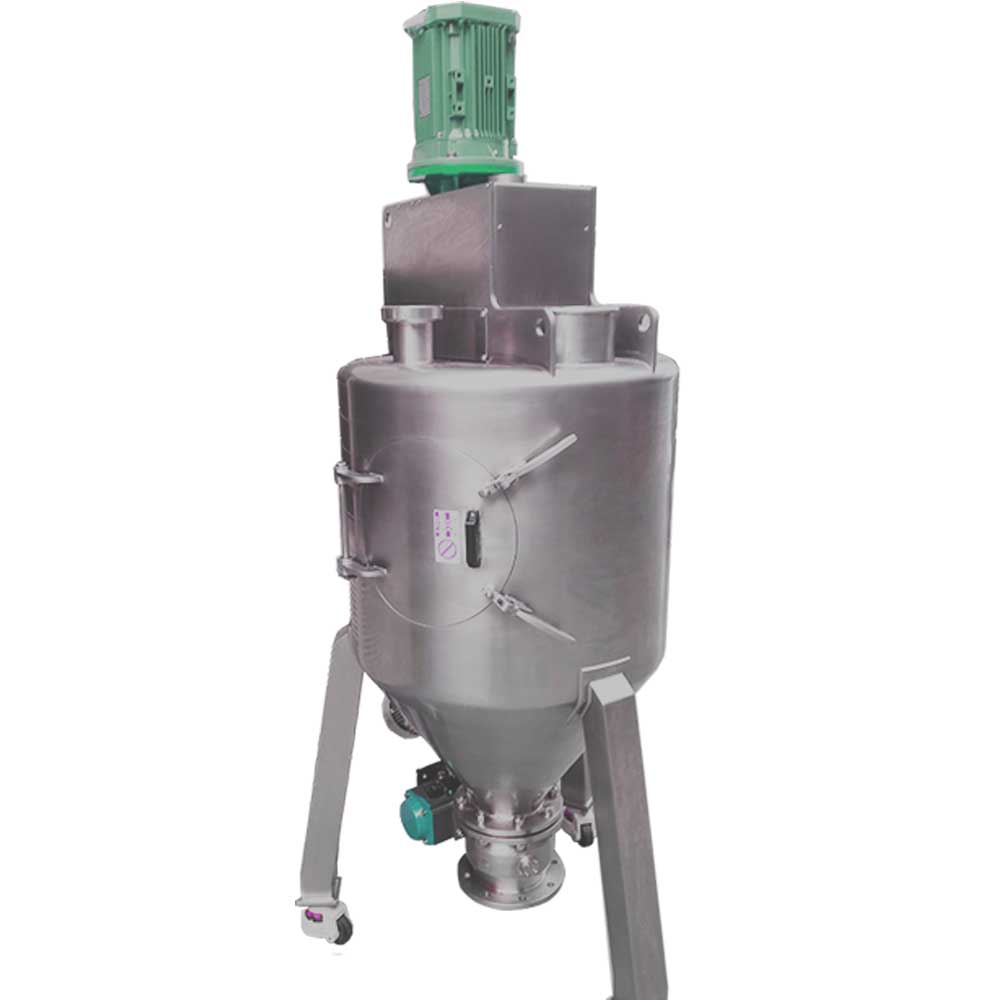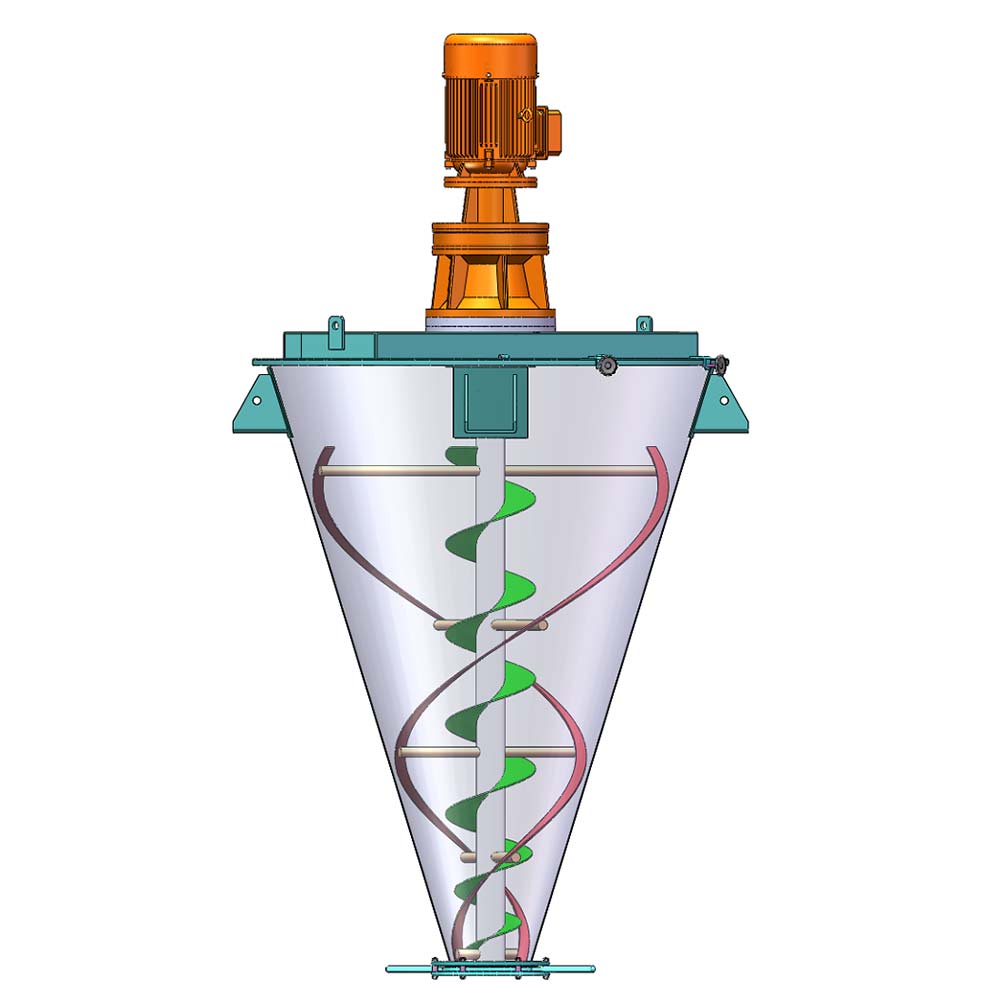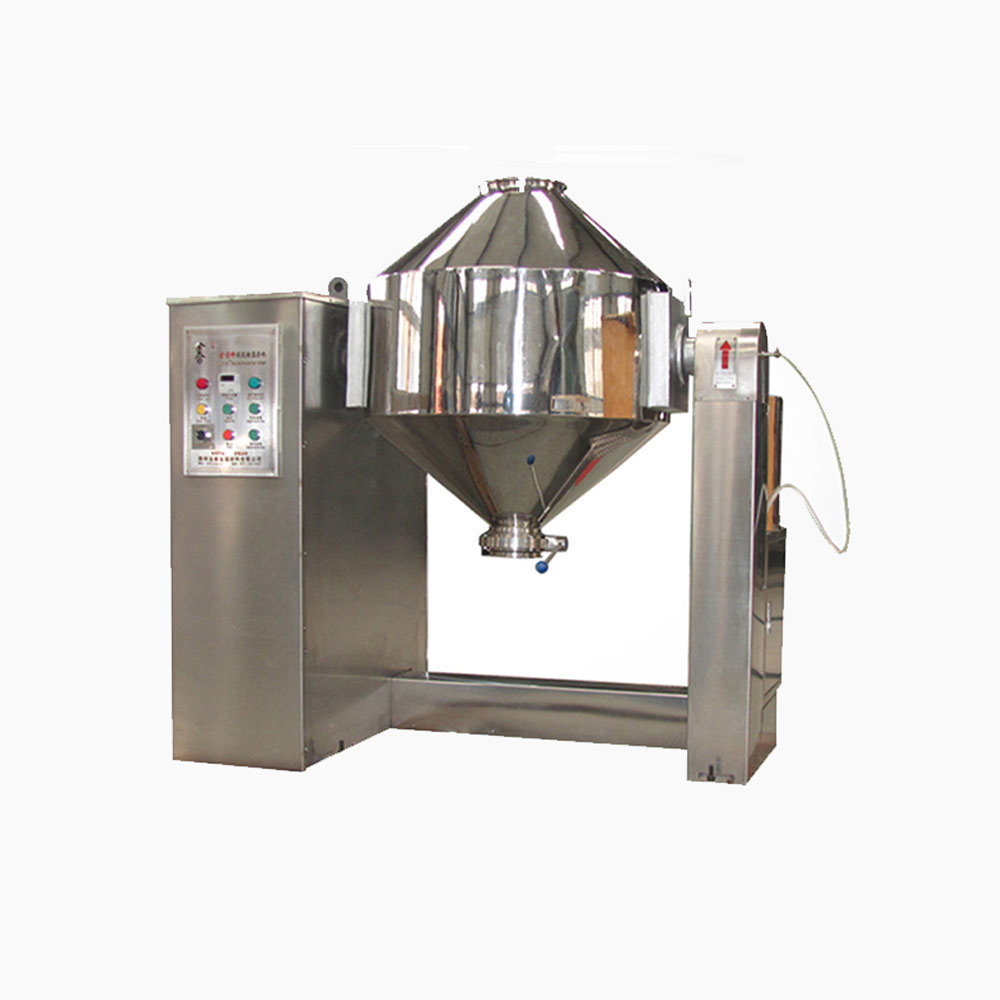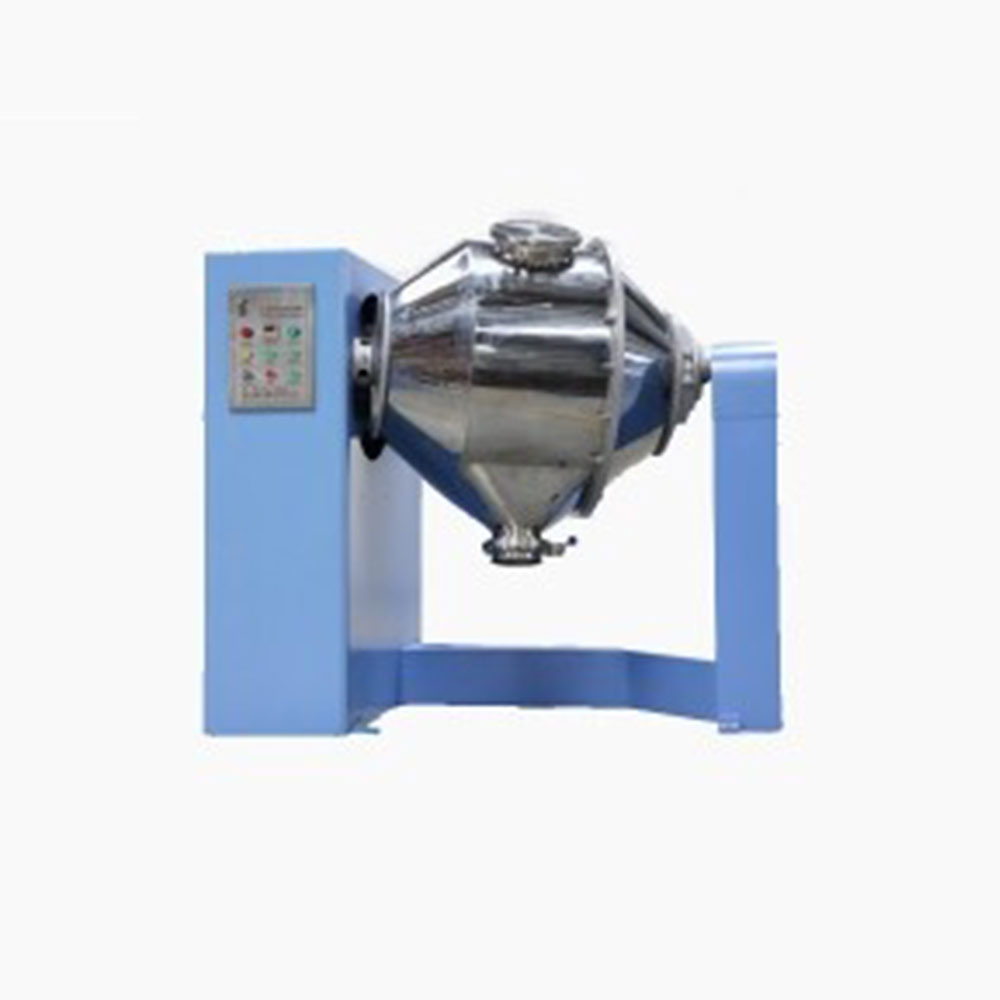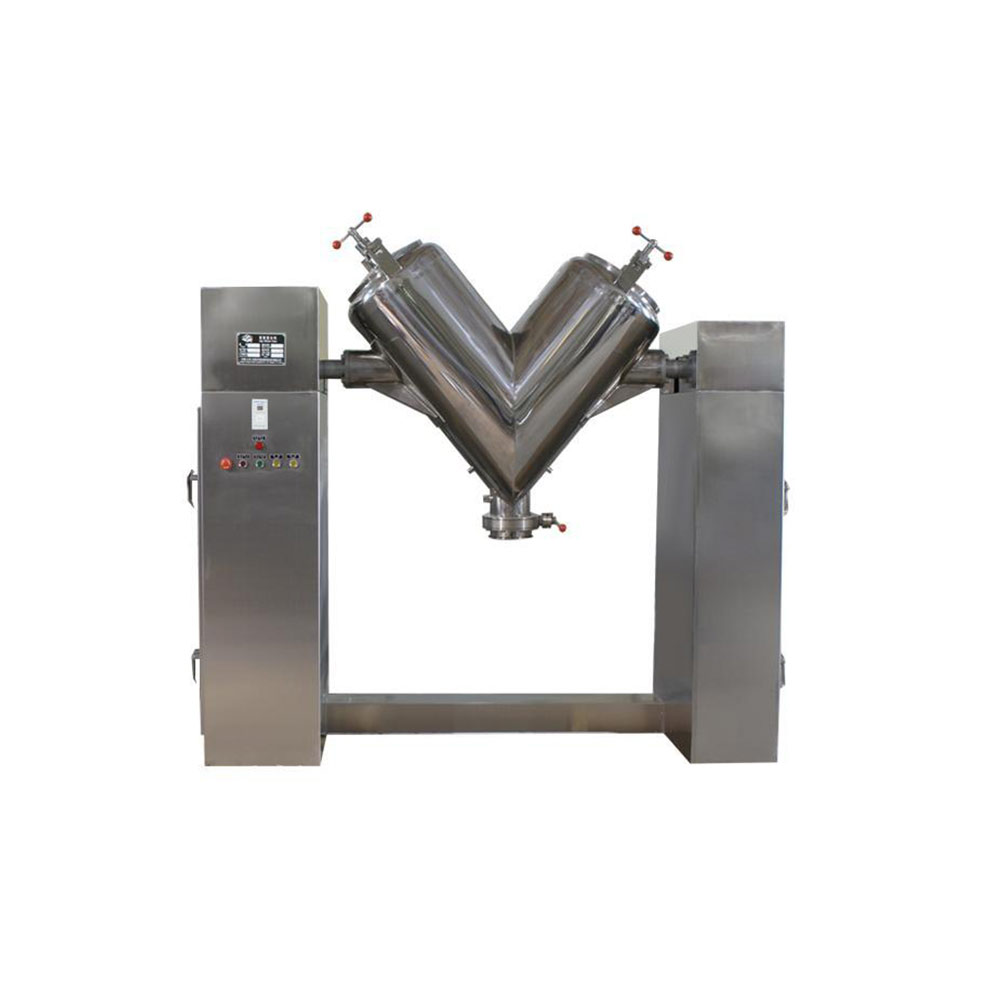Ask An Expert
Frequently Asked Questions
Yes, We can supply simple stand alone panels or automated PLC controlled systems. We normally install and test all controls on our mixers before they are shipped.
Yes, we normally test the mixers before they are shipped and mark out the wire need to connect on the control box.
We manufacture specialty mixing equipment for powder & bulk materials. Included are ribbon blender, plough mixer, conical screw mixer, twin shaft paddle mixer, V blender, double cone blender and other auxiliary equipment such as screw conveyor, quantitive auger filler.
We sell across the world, our cusotmers distribute 5 continents.
Share Us With Your Network
Dry Blender Selection Criteria – Vertical & Horizontal Designs
In processing plants around the world, ribbon blenders are used to mix many thousands of products, from fertilizers and plastic resins to flavored coffees and cosmetics. The ribbon blender is one of the most common mixing devices in service today, because it is one of the most versatile and cost-efficient mixers ever created. Its simple design makes it relatively easy to build. Simplicity also ensures easy maintenance.
But during the last few years, business conditions have changed in many industries. Competitive pressures have mounted worldwide to increase production, reduce waste, and improve end-product quality and consistency.
Suddenly process managers are finding that the “common” ribbon blender isn’t so simple anymore.
One by one, the process industries have recognized that many small improvements on the process line can add up to a big gain in overall production.
Faster discharge means shorter blending cycles and greater production on every shift…
More thorough discharge means less cleaning, greater accuracy, and less risk of cross-contamination between batches…
A variable-speed drive allows you to fine-tune the blending process, so you can intensify blending without fear of product degradation …
Several years ago, selecting a ribbon blender was mainly a matter of matching your drive and ribbon design to the bulk density of your product. In most applications today, this is only the beginning of the design process. In drives, ribbon design and materials, seals, packing materials and discharge valves, we now have many new choices to consider in order to boost productivity.
The result is that ribbon blenders are now being used in many applications − in plastics, pharmaceuticals, foods and other industries − that are surprisingly sophisticated.
But the ribbon blender still has its limitations. Often, as we refine the design to make the ribbon blender more and more productive, we eventually come to this critical question: Is this an application that would really be better served with a different design? Specifically, would a switch to a vertical cone screw blender deliver production gains large enough to justify a higher price tag?
This is sometimes a hard question to answer theoretically. Testing in a manufacturers test center is important, because it allows the equipment buyer to evaluate each blender design and confirm which is the best choice.
Ribbon blenders − what are the key design considerations?
1. Drive design.
The first variables to consider in powering the blender are always product density, volume and moisture content. But from that point on we must consider the needs of each application individually. Specifying the right drive requires effective communication between the equipment manufacturer and buyer to identify key process needs.
Slow-speed starting − Over the years, many ribbon blenders were built without any provision for starting at slow speed. Unfortunately, a dead load start presents many disadvantages, all of which increase costs. The buyer must choose between using an over-sized motor and agitator shaft that are capable of providing the peak horsepower and strength needed to get the batch moving or a smaller motor that is appropriate for operating the blender once it is running. The first choice is wasteful, the second choice is risky, since the high torque at start-up can overstress the system and eventually causes maintenance problems.
The best solution is to provide for a slow-speed start that protects the system.
Electronic starting systems are a great choice to solve this problem. Electronic soft start controllers can be programmed to allow a slow start under full load and protect the system against a spike in start-up torque and amperage.
Variable speed blending − The ability to blend at varying speeds can be advantageous in many circumstances. Certainly, it is important for R&D applications. It can also be useful in any plant where numerous products are blended and product changeover is common. By adjusting the peripheral speed of the ribbon, you can “tune” the blender to reach the greatest possible efficiency for each product. When blending friable materials, in particular, the variable drive allows you to blend at a speed just below the threshold at which the material will start to degrade.
2. Ribbon design and interior finish.
At first glance, ribbon design appears to have changed very little in recent years. But the ribbon/rod/shaft design has actually been the object of considerable evolution in design during the last decade, and it certainly represents a critical element in blender design. The ribbon, support rods and shaft must be correctly matched to the physical properties of the product to boost blending efficiency and prevent mechanical failures.
Naturally, the ribbon is specified to provide sufficient surface area and peripheral speed to move the bulk. An equally important measure is the differential between the inner and outer ribbons in the double spiral ribbon set. This differential determines the axial pumping action that ultimately moves the material toward the discharge. The challenge is to induce vigorous agitation without over-stressing the ribbon, rods and shaft. For this reason, the system should be designed from the ribbons inward. Ribbon design determines the rod design, which in turn determines the shaft that is needed. A balanced design provides a system that blends quickly, produces minimal resistance as the ribbon/rod assembly moves through the bulk, and ensures long-term reliability.
For every minute that your blender is committed to discharging and cleaning, production is sagging. So, efficient discharge has become another important focus in ribbon blender design. Fast discharge is a function of axial pumping action − especially the pumping action of the outer ribbon − and the discharge valve design. Complete discharge requires controlled clearances and a clean design in the interior trough.
All interior angles must include generous radius to prevent material from collecting in corners.
Clearances should be uniform at the bottom of the trough.
Welds should be ground and polished, even for non-sanitary applications.
3. Seals and valves.
Recent developments in seals, packing systems, and valves have made ribbon blenders more reliable and versatile. This is a welcome development, since the shaft and packing in a ribbon blender are submerged in the product zone.
Improved seal integrity always helps to insure against batch-to-batch contamination.
When blending abrasive materials, and when contamination is a critical concern, air-purged seals help to prevent material from attacking the packing material and shaft. In industries that require sanitary designs, quickly disassembled split seals/glands are provided for east cleaning after every batch.
The valve most often specified for a ribbon blender is a manually operated slide paddle valve. But for special applications − vacuum operation, for example − alternative valves are required. One alternative is a spherical disk valve, which provides a positive seal during vacuum blending, while it also offers a large discharge port for fast discharge.
What’s next?
As ribbon blender engineering continues to evolve, these workhorses will be used even more widely, and in more demanding applications. But the process engineer who is determined to maximize blending efficiency must eventually ask whether the ribbon blender is really the best design for his application. When in doubt, test before you invest in any new equipment. Compare the capabilities of a ribbon blender and a cone screw blender in an equipment manufacturer’s test center, using your own ingredients. Ultimately, this is the best way to be sure that you will be putting the best possible blender on your process line.
Do you need a ribbon blender or a vertical cone screw blender?
Ribbon blenders and vertical cone screw blenders are found in many plants, and in many ways they perform a similar function on the process line. But the differences in their design – and in the advantages they offer – are far more important than their similarities.
Of course, one very important difference to consider is price. The ribbon blender is generally less expensive than a vertical cone screw blender of comparable capacity. So, in practical terms, you should determine whether your application requires a vertical cone screw blender in order to achieve the product quality and processing efficiency that you need.
To decide which type of blender will work more efficiently in your application, ask yourself these questions.
1. How much room is available on your plant floor?
Before we even start talking about your blending needs, you can answer the first important question with a tape measure. If floor space is tight, you may have to go up − with a vertical blender − since a vertical blender requires a smaller footprint. If overhead space is limited, you may be forced to use a horizontal ribbon blender, which allows you to use a low-profile loading system. A multi-level operation is generally unnecessary.
2. Does the friability of your product require gentle blending?
If so, you may want to consider a vertical cone screw blender. The blending action of the slowturning mixing screw is very gentle.
3. Is complete discharge essential?
The cone screw blender gives you virtually 100% discharge through the lower cone. Even the best ribbon blenders fall short of this goal.
4. How tight is your budget for power?
The ribbon blender consumes more power, over long blending cycles this can add up.
5. Is contamination a critical risk?
With a packing gland in the product zone, the ribbon blender poses a greater threat of contamination. New seal designs have reduced the risk dramatically, but if your application requires the best protection available, you may need to switch to a cone screw blender.
6. Will you always operate with the blender at least half full?
If you need the flexibility to operate with smaller batches, choose the cone screw blender. Because of the geometry of the cone, this blender can operate efficiently with batches as small as 10% of blender capacity. The ribbon blender generally requires a minimum of 40-50% of full capacity.
7. Will you need complete cleaning between batches?
The cone screw blender is easier to clean. Just make sure that the cone screw blender you select does not require a bearing at the lower end of the screw. Modern designs support the screw from the top end will give you faster, more thorough discharge, easier cleaning, and fewer maintenance headaches.

